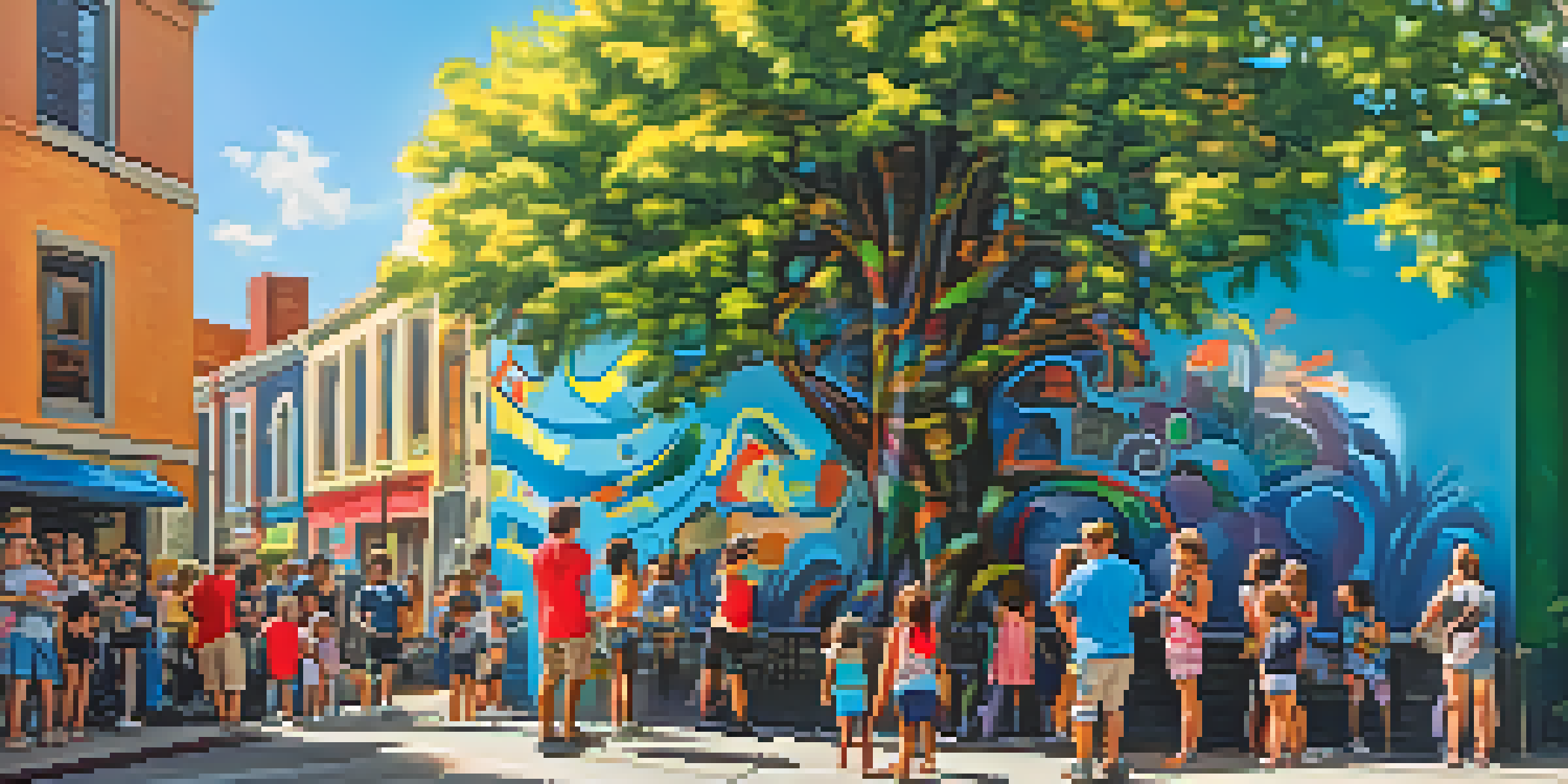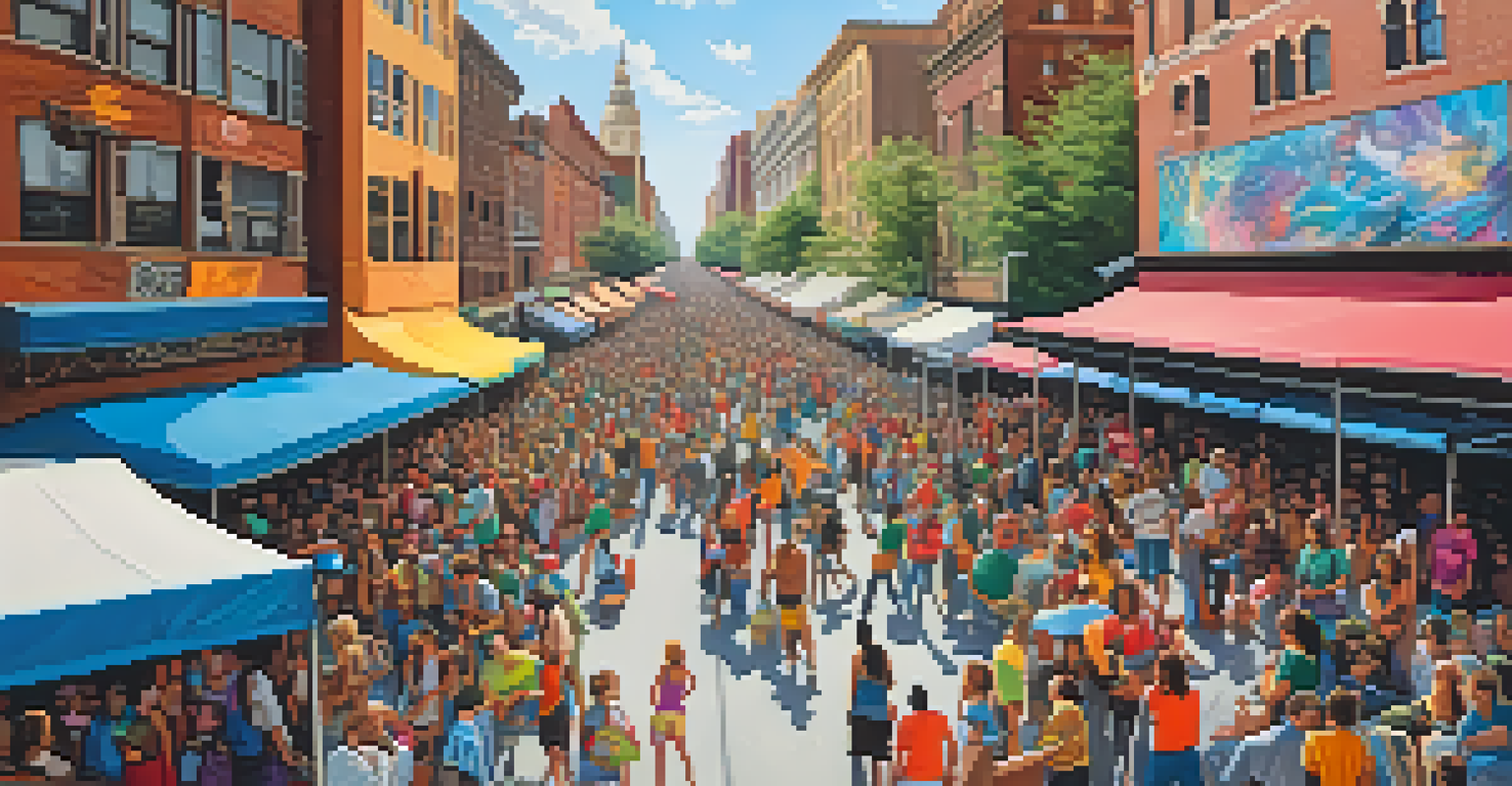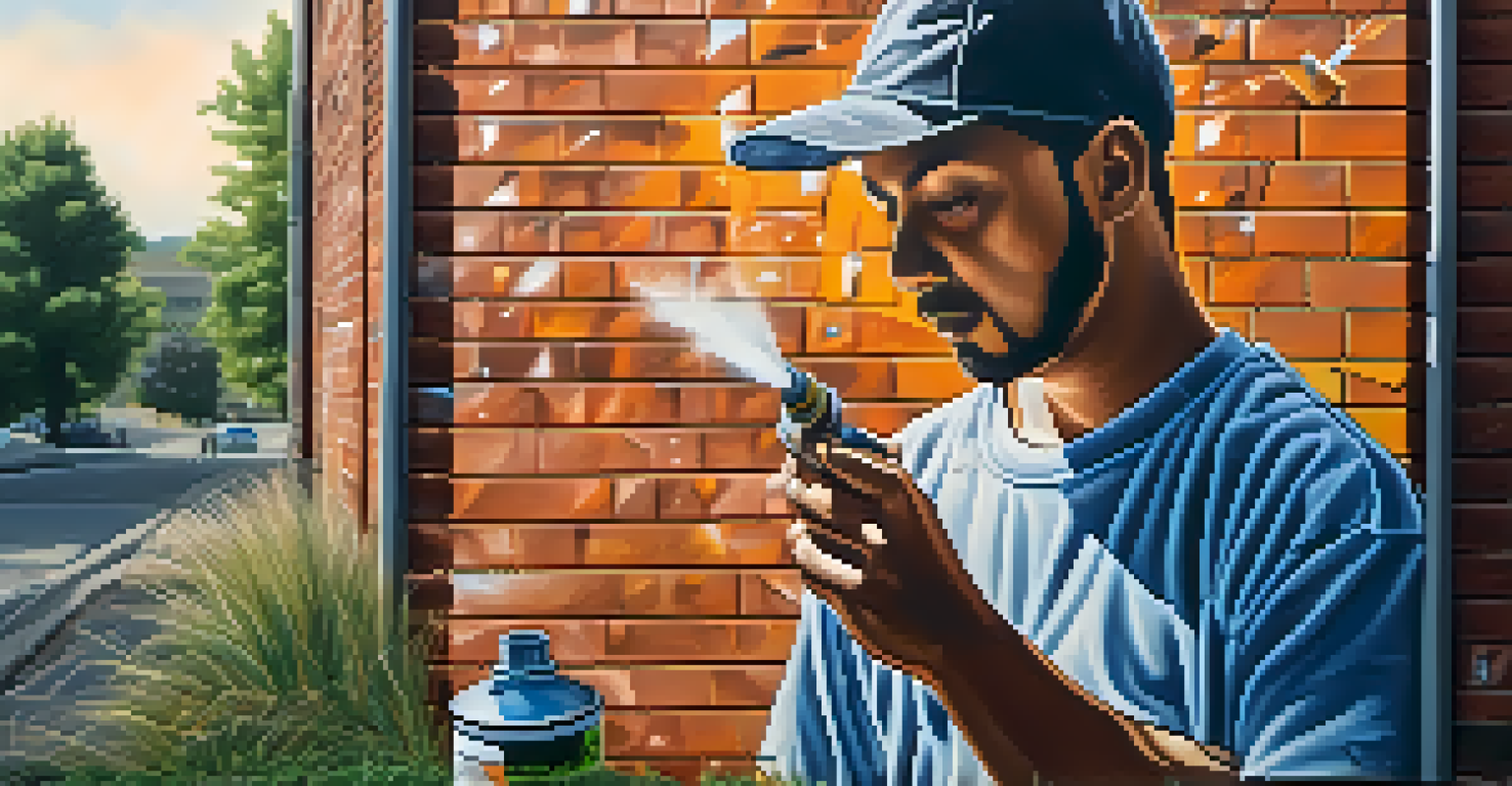Street Art Festivals: Celebrating Urban Creativity

The Rise of Street Art Festivals Worldwide
Street art festivals have surged in popularity over the past decade, transforming urban landscapes into vibrant canvases. These events bring together local and international artists, creating a melting pot of creativity that draws in crowds. Festivals like the Mural Festival in Montreal or the Upfest in Bristol celebrate not only the art but also the communities that embrace it.
Street art is a way to express who we are and what we believe in. It’s a form of communication that transcends language and cultural barriers.
As cities recognize the cultural and economic benefits of street art, they often provide support and funding for these festivals. This investment not only beautifies neighborhoods but also stimulates local economies through tourism and increased foot traffic. The blend of creativity and commerce is a win-win for artists and communities alike.
Moreover, these festivals often foster a sense of belonging and pride among residents. By showcasing diverse artistic expressions, they highlight the unique character of each area, inviting locals and tourists to engage with the art and the stories behind it.
Diversity of Artistic Styles and Techniques
One of the most exciting aspects of street art festivals is the variety of artistic styles on display. From traditional graffiti to intricate murals and interactive installations, there's something for everyone. This diversity not only captivates audiences but also serves as a platform for artists to experiment and push boundaries.

For instance, you might find a massive mural painted on a building's facade, while nearby, an artist creates a whimsical, temporary piece using chalk. These contrasting styles showcase the limitless potential of urban creativity, allowing artists to express their unique perspectives. Each piece tells a story, reflecting the artist's vision and the community's identity.
Street Art Festivals Boost Community
These events enhance local culture and pride while stimulating economic growth through tourism.
Additionally, many festivals incorporate workshops and live demonstrations, inviting attendees to witness the creative process firsthand. This interactive element fosters a deeper appreciation for street art, breaking down barriers between artists and the audience.
Community Engagement and Participation
Street art festivals do more than just display art; they actively engage the community. Many events encourage local residents to participate in creating artwork, fostering a sense of ownership and pride. Whether through collaborative murals or community art projects, these initiatives invite everyone to contribute their voice.
Art is not a mirror to hold up to society, but a hammer with which to shape it.
This engagement helps to bridge gaps between artists and community members, transforming the festival into a shared experience. It’s not uncommon to see families, children, and even pets joining in the fun, painting, and celebrating together. These moments create lasting memories and strengthen community bonds.
Moreover, festivals often include various activities such as live music, food stalls, and art markets, making them a comprehensive cultural experience. This multifaceted approach not only entertains but also educates attendees about the importance of street art and its impact on urban life.
The Role of Technology in Street Art
In today’s digital age, technology plays a crucial role in the evolution of street art festivals. From social media promotion to augmented reality experiences, technology enhances how artists and audiences interact. Many festivals now use apps to guide attendees through art installations or allow them to vote for their favorite pieces.
Additionally, artists are increasingly using digital tools to create their work, often projecting designs onto walls before applying paint. This blend of traditional and modern techniques not only streamlines the creative process but also opens up new avenues for expression. The result is a dynamic art form that continues to evolve.
Diverse Art Styles Engage Audiences
Street art festivals showcase a variety of artistic expressions, inviting both artists and attendees to connect creatively.
Furthermore, the documentation of street art through photography and video has become essential. Artists can share their work with a global audience online, gaining recognition and inspiration from around the world. This digital presence helps to elevate street art from a local phenomenon to a global movement.
Street Art as a Form of Social Commentary
Street art has long been a powerful medium for social commentary, and festivals amplify this voice. Artists often use their work to address pressing issues such as inequality, climate change, and political unrest. This ability to spark conversation and provoke thought makes street art a vital part of contemporary culture.
At festivals, you’ll find works that challenge societal norms and encourage dialogue. For example, a mural depicting environmental degradation can inspire viewers to consider their role in sustainability. By highlighting these issues, artists contribute to a broader narrative, urging audiences to reflect on their world.
Moreover, street art festivals often invite artists with a mission to raise awareness about specific causes. Collaborations with NGOs and community organizations can lead to impactful projects that resonate deeply with attendees. This intersection of art and activism not only enriches the festival experience but also empowers communities to advocate for change.
Economic Impact of Street Art Festivals
Street art festivals can have a significant economic impact on their host cities. By attracting visitors, these events stimulate local businesses, from hotels and restaurants to shops and galleries. The influx of tourists provides a much-needed boost, especially for small enterprises that thrive on foot traffic.
Moreover, festivals often create jobs for local artists, vendors, and event staff, contributing to the local economy. This economic activity extends beyond the festival weekend, as positive experiences can lead to repeat visits. When people discover a vibrant art scene, they’re likely to return, bringing their friends and family along.
Technology Shapes Modern Street Art
Digital tools and social media enhance the interaction between artists and audiences, expanding the reach of street art.
In some cases, cities have even witnessed a long-term increase in tourism and interest in street art following a festival. This lasting impact can lead to more events, further solidifying the city’s reputation as a cultural hub. Investing in street art festivals is not just about art; it's about fostering community and economic growth.
Celebrating Local Artists and Talent
A key feature of many street art festivals is the celebration of local talent. These events provide a platform for emerging artists to showcase their work alongside established names, fostering an inclusive environment. This spotlight not only boosts the artists' careers but also enriches the local art scene.
Local artists often bring unique perspectives and cultural influences to their work, reflecting the community's identity. This connection between art and place creates a rich tapestry of expression that resonates with festival-goers. Attendees can explore the artistic voices that shape their neighborhoods, deepening their appreciation for local culture.

Additionally, many festivals include competitions or grants for local artists, further encouraging creativity and innovation. By investing in homegrown talent, cities nurture their artistic communities, ensuring a vibrant future for street art and culture.